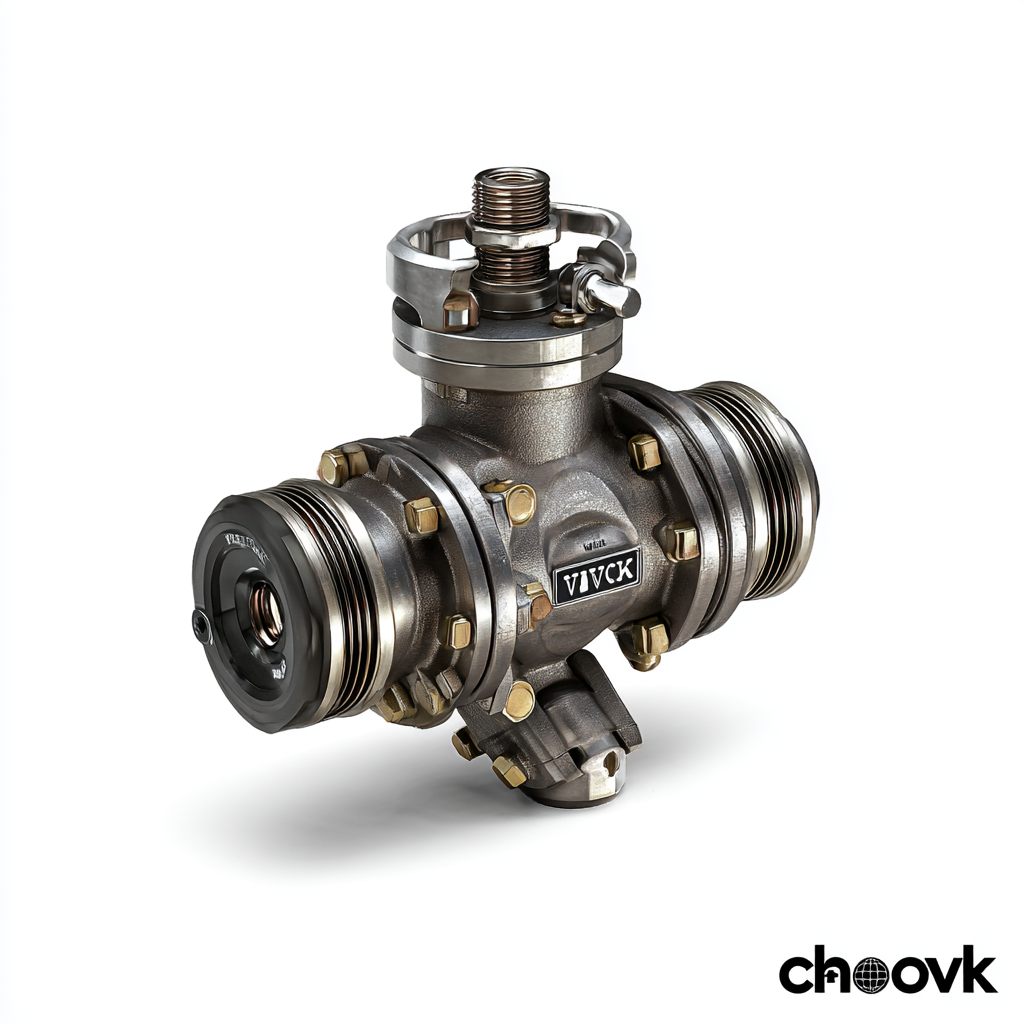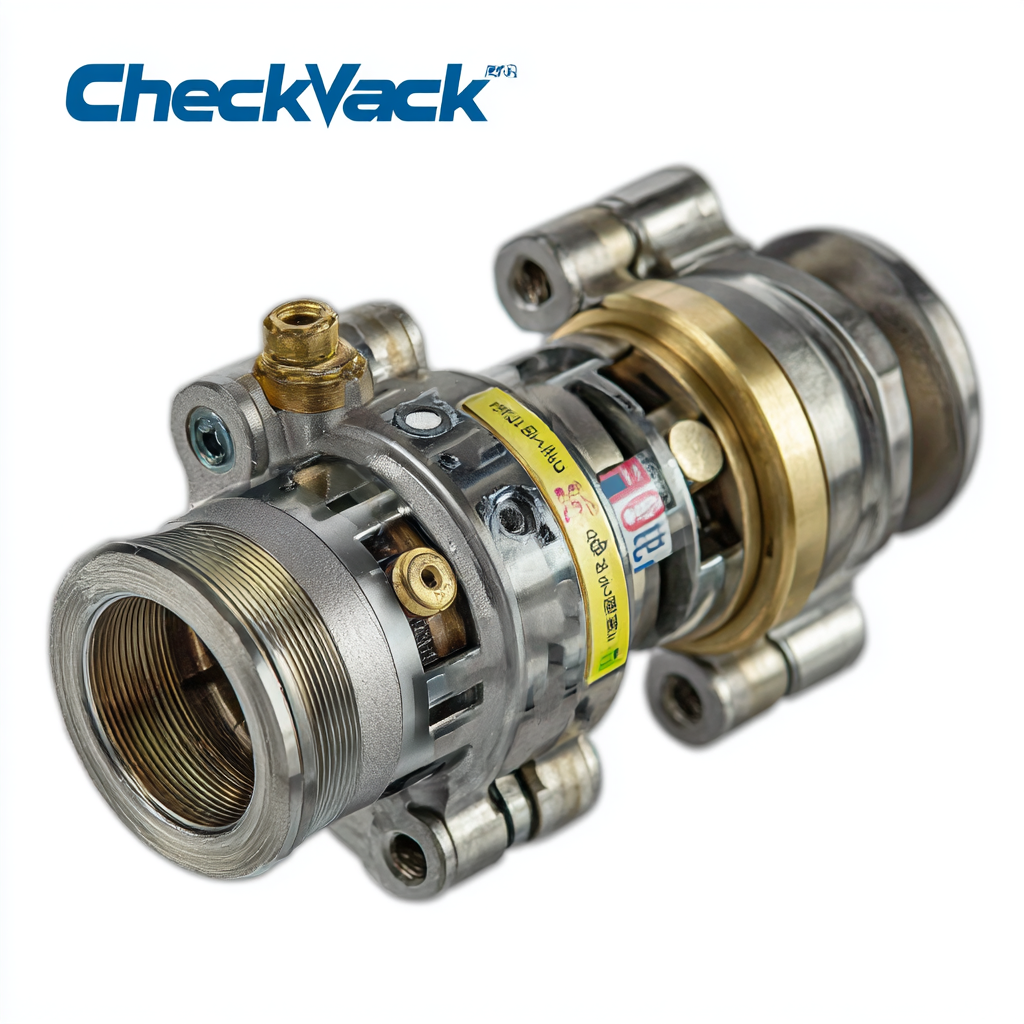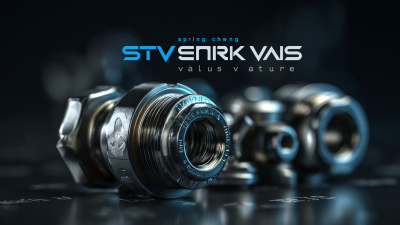Top 5 Unique Applications of the Best Silent Check Valve in Modern Industry
In the rapidly evolving landscape of modern industry, maintaining efficiency and reliability in fluid control systems has never been more critical. Among the myriad of components that ensure seamless operations, the silent check valve stands out due to its unique design and functionality. Unlike traditional check valves, which can produce disruptive noise during operation, silent check valves allow for smooth fluid flow while effectively preventing backflow. This blog will explore the top five unique applications of the best silent check valve in various industrial settings, shedding light on their importance in maintaining production standards and optimizing processes. From water treatment facilities to manufacturing plants, understanding how to implement these advanced valves can greatly enhance operational efficiency and reduce maintenance costs, making them an essential component in today’s industrial toolkit.

Top 5 Unique Applications of the Best Silent Check Valve in Modern Industry
In modern industry, silent check valves have emerged as critical components for ensuring efficient fluid movement without causing disruptive noise. One unique application is in the water treatment facilities, where these valves help maintain optimal pressure levels. By preventing backflow without the harsh clattering sound typical of standard check valves, silent check valves ensure minimal disturbance in these sensitive environments. This feature is particularly significant when dealing with delicate operations, such as chemical dosing, where precision is key.
Another innovative use of silent check valves is in the HVAC systems of large commercial buildings. Here, they help regulate airflow and maintain pressure differences without generating excessive noise that could be disruptive to occupants. By integrating these valves, engineers can ensure a quieter, more comfortable environment, all while maximizing energy efficiency and operational reliability. In such settings, the use of silent check valves not only enhances comfort but also extends the lifespan of the overall system, making them an indispensable asset in modern industrial applications.
Emerging Trends in Silent Check Valve Technology for 2025
As we venture into 2025, the silent check valve technology is witnessing groundbreaking innovations that are set to transform multiple industries. One of the most significant emerging trends is the integration of automation and smart controls into valve systems. These advancements allow for real-time monitoring of fluid dynamics, enhancing efficiency and minimizing leakage, ultimately leading to reduced operational costs. Industry reports project that the smart valve market will grow significantly, with a compound annual growth rate (CAGR) of over 15% through 2026, fueled by increasing demands for automation across manufacturing and process industries.
Another notable trend is the increasing focus on sustainability and eco-friendly designs. Manufacturers are now utilizing advanced materials that not only enhance valve performance but also contribute to reducing the carbon footprint of industrial operations. According to recent studies, the implementation of sustainable practices in valve manufacturing could lead to a reduction of up to 30% in waste generation by 2025. Furthermore, the growing emphasis on electrification within sectors like heavy machinery underscores the need for silent check valves that can support lower energy consumption and efficient hydraulic systems. As industries strive for greener solutions, silent check valves are poised to play a vital role in achieving operational excellence while maintaining environmental responsibility.
Application of Silent Check Valves in Renewable Energy Systems and their Efficiency Gains
Silent check valves are becoming increasingly important in renewable energy systems due to their unique ability to prevent backflow while maintaining minimal turbulence and noise. This feature facilitates more efficient operation in systems like wind turbines and solar energy plants, where fluid dynamics can significantly affect performance. By reducing energy losses caused by backflow, silent check valves contribute to overall efficiency gains, making these renewable energy sources more sustainable and cost-effective.
When integrating silent check valves into renewable energy systems, consider the following tips:
- Match Valve Size and Type:
Ensure that the valve's sizing aligns with the system requirements, as improper sizing can lead to inefficiencies and operational issues.
- Regular Maintenance Checks:
Implement a routine maintenance schedule to inspect the valves for wear and tear, ensuring optimal performance and prolonging their lifespan.
- Strategic Placement:
Place silent check valves in suitable locations within the system to minimize pressure drop and maintain flow efficiency.
By incorporating these practices, energy systems can fully leverage the benefits of silent check valves, leading to improved performance and sustainability in their operations.
Critical Role of Silent Check Valves in Water Treatment Facilities: Data Insights
Silent check valves play a critical role in water treatment facilities, ensuring efficient flow control while minimizing the potential for backflow. The importance of these valves is highlighted by the global industrial valves market, which is projected to grow from USD 86.67 billion in 2025 to an impressive USD 131.6 billion by 2033. This growth, reflecting a compound annual growth rate (CAGR) of 6%, underscores the increasing demand for advanced valve solutions, including silent check valves, which are essential for maintaining the integrity and efficiency of water systems.
Recent advancements in technology and data analytics have further emphasized the need for proactive practices in water utilities. For instance, the transition from reactive to proactive management approaches enhances the operational efficiency of water treatment processes. A study on optimal calcium removal in drinking water treatment exemplifies how improved predictive models can bolster performance in complex systems. These innovative methodologies, alongside the adoption of silent check valves, facilitate better management of produced water, particularly in challenging environments such as offshore platforms. By integrating state-of-the-art designs in water treatment, facilities can achieve superior operational outcomes and address the pressing challenges of contemporary water management.
Top 5 Unique Applications of the Best Silent Check Valve in Modern Industry
| Application Area |
Importance |
Flow Rate (m³/h) |
Pressure Drop (bar) |
Material Used |
| Water Treatment Facility |
Prevents backflow, ensuring water quality |
500 |
0.5 |
Stainless Steel |
| Industrial Manufacturing |
Ensures smooth operation of fluid systems |
800 |
0.7 |
PVC |
| High-Rise Building Plumbing |
Prevents water hammer and protects pipes |
300 |
0.4 |
Brass |
| Irrigation Systems |
Enhances efficiency in water distribution |
650 |
0.6 |
Polypropylene |
| Food and Beverage Processing |
Ensures hygiene and safety in fluid transfer |
450 |
0.5 |
Hygienic Stainless Steel |
Innovative Use of Silent Check Valves in HVAC Systems for Enhanced Performance
Silent check valves play a crucial role in enhancing the performance of HVAC systems by preventing backflow and ensuring efficient fluid dynamics. These innovative valves minimize noise while regulating the flow of air or refrigerant. This is particularly beneficial in commercial buildings where noise pollution can be disruptive. By employing silent check valves, HVAC engineers can maintain optimal pressure levels, boost energy efficiency, and prolong system lifespan.
Tips for selecting the right silent check valve include considering factors like size, material, and application type. Ensure the valve is properly sized for your system to avoid pressure drops or flow issues. Additionally, look for valves made from durable materials that can withstand the operating conditions of your HVAC system, such as temperature fluctuations and humidity levels.
Another important tip is to install silent check valves in strategic locations within the HVAC system. Placing them near pumps and fan coils can help maintain a steady flow and prevent potential backflow. Regular maintenance and checks for wear can also enhance the effectiveness of these valves, ensuring they function silently and reliably throughout their operational life.
Top 5 Unique Applications of the Best Silent Check Valve in HVAC Systems
 © Copyright 2020 Tianjin Tanghaidongyang Valve Co., Ltd. All Rights Reserved.
© Copyright 2020 Tianjin Tanghaidongyang Valve Co., Ltd. All Rights Reserved.





